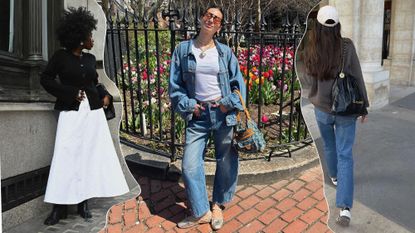Unveiling the Rich Heritage of Eastern Fashion
Exploring the detailed tapestry of Eastern fashion introduces a globe where practice meets innovation, and craftsmanship intertwines with social importance. From the luxurious silks of ancient empires to the intricate embroidery of nomadic tribes, each garment narrates that transcends time and boundaries, resembling the abundant heritage and creative heritage of the East. As we peel off back the layers of background and practice, an interesting journey awaits, untangling the secrets behind the exciting attraction and enduring influence of Eastern style on the global stage.
Origin of Eastern Style

In Mesopotamia, for instance, the Sumerians and Babylonians produced garments making use of leather, linen, and wool, decorated with detailed patterns and precious jewelry. Ancient Egyptians are renowned for their innovative weaving abilities and making use of lightweight, breathable fabrics like bed linen. Chinese fashion stressed the significance of color significance and detailed needlework methods, while Indian clothing featured vivid hues, luxurious textiles like silk and cotton, and intricate drapery designs such as the saree.
These ancient civilizations not just influenced each other however additionally led the way for the culturally abundant and varied tapestry that is modern Eastern fashion. Via centuries of evolution, Eastern style remains to thrive, mixing custom with modern-day impacts to create classic and special designs.
Social Impacts and Practices
Drawing from centuries-old customizeds and ideas, cultural impacts and practices play a critical duty in shaping the significance of Eastern style (eastern wear pakistan). The rich tapestry of cultures across Eastern regions such as Asia, the Middle East, and Africa has actually greatly influenced the garments styles, colors, materials, and creates that prevail in Eastern fashion today
In countries like India, Japan, and China, standard garments like robes, sarees, and cheongsams remain to hold considerable cultural value and are usually embellished with intricate embroidery or symbolic patterns that reflect deep-rooted beliefs and values. In a similar way, in Middle Eastern countries, the moving kaftans and abayas worn by guys and women not just function as small clothes however also reflect the area's cultural heritage and Islamic practices.
Additionally, using details shades like red forever luck in Chinese society or complex geometric patterns inspired by Islamic design further exhibit how social impacts manifest in Eastern fashion - eastern wear pakistan. By recognizing and protecting these cultural impacts and customs, Eastern fashion remains to evolve while staying true to its rich heritage
Evolution of Eastern Clothes
In time, Eastern garments have undertaken considerable transformations, showing a blend of practice and modernity in their layout and design. Typical Eastern garments such as the saree, hanbok, kimono, and salwar kameez have progressed to incorporate contemporary elements while preserving their cultural significance.
One remarkable evolution is using cutting-edge materials and methods in Eastern garment building and construction. Standard handwoven textiles like silk and cotton have actually been complemented with modern products such as polyester and blends, providing enhanced toughness and convenience of care. In addition, innovations in printing technologies have made it possible for complex patterns and styles to be integrated right into Eastern garments with accuracy and detail.
In addition, changes in silhouette and tailoring have improved Eastern attire, making them extra appropriate and functional for diverse celebrations. Traditional outfit codes have actually loosened up, enabling trial and error with styles, decorations, and colors. This advancement has not only made Eastern garments more attractive and obtainable to an international audience but has additionally guaranteed their continued relevance in contemporary fashion landscapes.
Significance in Eastern Clothes
Exploring the deep-rooted social importance woven into Eastern attire reveals an abundant tapestry of symbolism and custom. Eastern garments are usually imbued with signs that reflect the wearer's societal condition, spiritual beliefs, and cultural identity.
In addition, specific garments hold symbolic meanings. Its design, material, and even the means it is put on all carry deep social significance.

Impact of Eastern Style Today

The incorporation of Eastern aspects in Western fashion has actually led to a blend of designs that provide to diverse tastes and choices (eastern wear pakistan). Developers typically attract inspiration from Eastern textiles, patterns, navigate to these guys and shapes, creating ingenious and unique pieces that blend conventional and modern aesthetics. This cross-cultural exchange has not just rejuvenated the garment industry however additionally cultivated a much deeper gratitude for Eastern heritage and craftsmanship
Furthermore, the rise of social media and digital systems has even click here for more more magnified the impact of Eastern fashion, allowing developers and brands to reach a broader audience and display their social heritage to the globe. Through collaborations, style shows, and on-line projects, Eastern fashion remains to flourish and advance in today's vibrant and interconnected global landscape.
Final Thought
In conclusion, the rich heritage of Eastern fashion is a testament to the social influences, elaborate workmanship, and extensive meaning embedded in each garment. From old people to modern interpretations, Eastern style continues to mesmerize with its unique blend of custom and technology. The influence of Eastern style today acts as a reminder of the ageless sophistication and imaginative expression that have actually made it an international sensation commemorated for its abundant cultural heritage.
Exploring the complex tapestry of Eastern fashion introduces a world where custom satisfies advancement, and craftsmanship intertwines with cultural importance.The withstanding symbolism and social significance embedded in Eastern attire proceed to form and affect the contemporary influence of Eastern fashion today. Eastern style has gone beyond borders, ending up being a global phenomenon embraced by designers, celebrities, and style fanatics worldwide.In moved here verdict, the abundant heritage of Eastern fashion is a testimony to the cultural impacts, complex craftsmanship, and extensive meaning installed in each garment. The effect of Eastern fashion today serves as a pointer of the ageless beauty and imaginative expression that have actually made it a worldwide sensation commemorated for its rich social heritage.